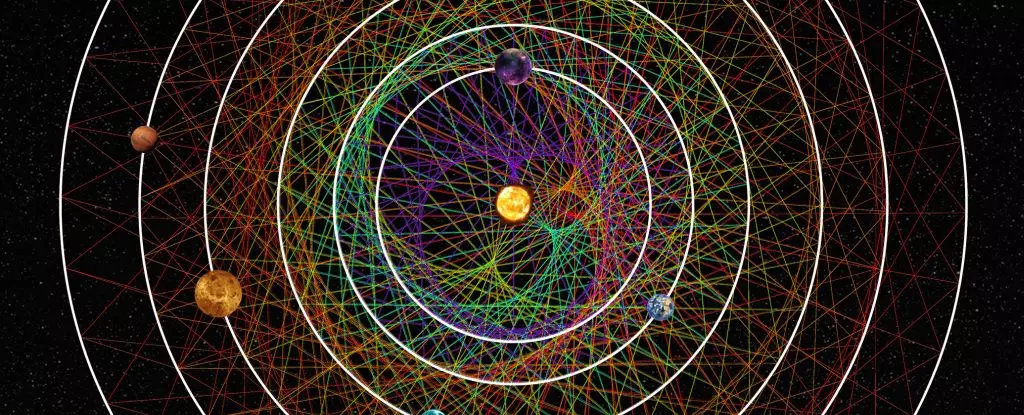In a remote location in space, about 100 light-years away from our Solar System, lies a planetary system that has captured the attention of scientists due to its rare and mathematically perfect orbital configuration. This system, centered around an orange dwarf star called HD 110067, consists of six exoplanets that move in perfect harmony with each other. The fact that these planets exhibit a chain of orbital resonances indicates exceptional stability, suggesting that the system has remained undisturbed for billions of years since its formation. This exceptional stability has piqued the interest of researchers, particularly in the search for potential signs of extraterrestrial life.
Astrophysicist Carmen Choza and her team at the SETI Institute have been investigating the HD 110067 system for any possible technosignatures – indicators of past or present alien technology. Despite conducting a thorough search for radio signals that could hint at technological advancements, the researchers have so far come up empty-handed. However, this lack of immediate results does not deter them; instead, they see it as an opportunity to refine their methods and revisit the system with more sensitive instruments in the future. The search for alien technosignatures in our galaxy poses numerous challenges, given the vastness of space and the uncertainty surrounding the nature of extraterrestrial technology.
One approach taken by scientists at SETI involves using Earth as a reference point for potential alien technology. Since Earth is the only known planet with life and technology, researchers can extrapolate the type of radio emissions produced by our civilization to create a template for detecting similar signals from other worlds. By analyzing the radio signals emitted by Earth and considering how these might appear from a distant perspective, scientists can devise search strategies to scan nearby systems for any matching signals. The HD 110067 system stands out as a promising candidate for such investigations due to its stable nature and the potential presence of habitable conditions on some of its planets.
To detect any possible alien technology in the HD 110067 system, Choza and her team analyzed data from the Green Bank Telescope, looking for specific frequency patterns that could indicate the presence of advanced civilizations. Despite extensive efforts, the researchers did not find any definitive evidence of extraterrestrial technology using this particular method. However, they remain optimistic about the future prospects, emphasizing the need for more advanced and diverse search techniques to uncover potential signals from distant civilizations. The quest for detecting technosignatures in the Milky Way is an ongoing endeavor, driven by curiosity and the desire to unravel the mysteries of the cosmos.
The discovery of the HD 110067 planetary system offers a unique opportunity to study a mathematically perfect orbital configuration that could harbor alien life. While the search for technosignatures in this system has not yielded immediate results, it underscores the complexity and challenges of identifying potential signals from extraterrestrial civilizations. As technology advances and our understanding of the universe deepens, scientists remain hopeful that they will one day detect definitive evidence of alien life beyond our planet. The pursuit of uncovering the secrets of the cosmos continues, fueled by the fascination with the unknown and the quest for answers to humanity’s most profound questions.


Leave a Reply